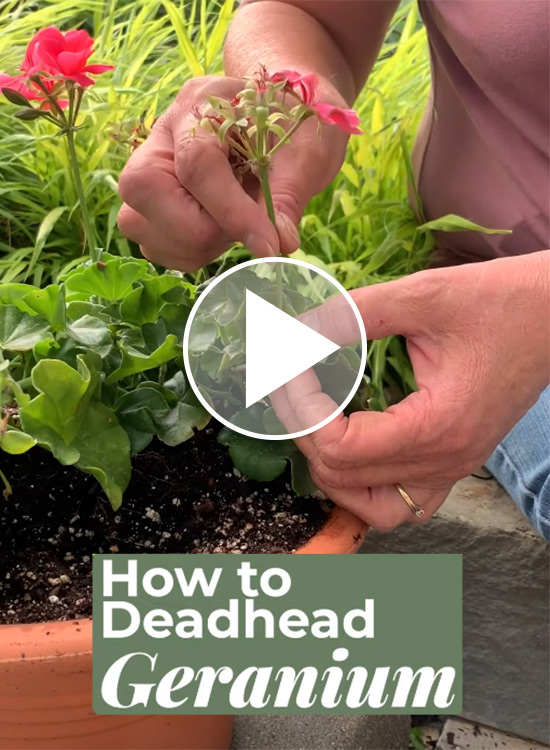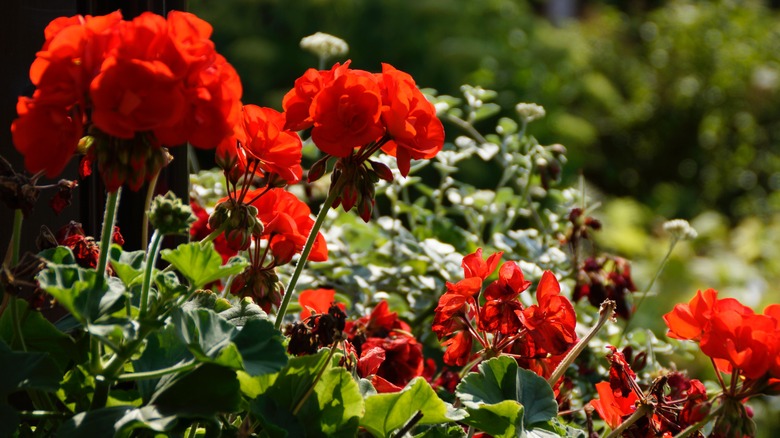Why Deadheading Matters for Geranium Health
Geranium plants require regular deadheading to promote healthy growth, encourage blooming, and prevent seed production. By removing spent flowers, you’re allowing your geranium to focus its energy on producing new blooms rather than seed production. This simple yet effective technique can make a significant difference in the overall appearance and health of your geranium plant. In fact, regular deadheading can increase blooming by up to 50%, making it an essential step in any geranium care routine. To learn how to deadhead a geranium correctly, it’s essential to understand the importance of deadheading and its benefits for your plant’s health. By incorporating deadheading into your geranium care routine, you can enjoy a more vibrant and thriving plant.
Identifying the Right Time to Deadhead Your Geranium
Timing is everything when it comes to deadheading your geranium. Knowing when to deadhead is crucial to encourage healthy growth, promote blooming, and prevent seed production. So, how do you know when it’s time to deadhead your geranium? Look for these signs: wilting flowers, brown petals, and seed pods forming. These indicators signal that the flower has completed its blooming cycle and is ready to be removed. By deadheading at the right time, you’ll be able to direct your geranium’s energy towards producing new blooms, rather than seed production. Regular deadheading will also help maintain your plant’s appearance, encouraging a bushy and vibrant growth habit. To learn how to deadhead a geranium correctly, it’s essential to identify the right time to deadhead and remove spent flowers promptly.
The Tools You’ll Need to Deadhead Like a Pro
Before you start deadheading your geranium, it’s essential to gather the necessary tools to ensure a successful and efficient process. Having the right tools will make a significant difference in the outcome, and help you learn how to deadhead a geranium like a pro. Here are the must-haves for deadheading geraniums:
- Pruning shears: Invest in a good pair of pruning shears that are sharp and clean. This will help you make precise cuts and prevent spreading diseases.
- Gardening gloves: Wear gardening gloves to protect your hands from thorns and dirt. This will also give you a better grip on the stems.
- A small container for disposing of dead flowers: Have a small container or bag ready to collect the dead flowers and debris. This will keep your workspace clean and prevent the spread of disease.
With these tools in hand, you’ll be well-equipped to tackle the task of deadheading your geranium. Remember to always disinfect your pruning tools between cuts to prevent the spread of disease. By having the right tools and following proper deadheading techniques, you’ll be able to keep your geranium healthy, thriving, and blooming beautifully.
A Step-by-Step Guide to Deadheading Geraniums
Now that you have the necessary tools and know when to deadhead, it’s time to learn how to deadhead a geranium like a pro. Follow this step-by-step guide to ensure you’re deadheading your geranium correctly:
Step 1: Inspect the Plant – Start by inspecting your geranium plant, looking for wilting flowers, brown petals, and seed pods forming. This will help you identify which flowers need to be removed.
Step 2: Remove Spent Flowers – Using your pruning shears, carefully remove the spent flowers, making sure to cut just above a leaf node or a joint. This will help the plant direct its energy towards producing new blooms.
Step 3: Trim Stems – Trim the stems to about one-quarter inch above a leaf node or a joint. This will help the plant heal quickly and reduce the risk of disease.
Step 4: Dispose of Debris – Dispose of the removed flowers and debris in your small container or bag. This will keep your workspace clean and prevent the spread of disease.
Step 5: Repeat Regularly – Deadheading is an ongoing process, and it’s essential to repeat it regularly to encourage continuous blooming and healthy growth. Set a reminder to deadhead your geranium every 7-10 days to ensure optimal results.
By following these steps, you’ll be able to deadhead your geranium like a pro, promoting healthy growth, encouraging blooming, and preventing seed production. Remember to always disinfect your pruning tools between cuts to prevent the spread of disease. With regular deadheading, you’ll be able to enjoy your geranium’s beautiful blooms all season long.
Tips for Effective Deadheading: What to Avoid and What to Do
When it comes to deadheading geraniums, there are some essential tips and tricks to keep in mind to ensure you’re doing it effectively. By following these expert tips, you’ll be able to maximize the benefits of deadheading and keep your geraniums thriving:
Avoid Over-Pruning – One of the most common mistakes when deadheading geraniums is over-pruning. Be careful not to cut too much stem, as this can cause stress to the plant and lead to disease or pest issues. Instead, focus on removing only the spent flowers and trimming the stems to encourage new growth.
Leave Some Stem Intact – When trimming stems, make sure to leave some stem intact to allow the plant to heal quickly. Cutting too much stem can leave the plant vulnerable to disease and pests.
Deadhead Regularly – Deadheading is an ongoing process, and it’s essential to repeat it regularly to encourage continuous blooming and healthy growth. Set a reminder to deadhead your geranium every 7-10 days to ensure optimal results.
Disinfect Pruning Tools – To prevent the spread of disease, make sure to disinfect your pruning tools between cuts. This simple step can help keep your geraniums healthy and thriving.
Monitor for Pests and Diseases – When deadheading, take the opportunity to inspect your geraniums for any signs of pests or diseases. Catching issues early can help prevent them from spreading and causing damage to your plants.
By following these expert tips, you’ll be able to deadhead your geraniums like a pro and enjoy the many benefits that come with it, including increased blooming, improved plant appearance, and reduced pest and disease issues. Remember, deadheading is a crucial step in geranium care, and with these tips, you’ll be able to do it effectively and keep your geraniums thriving.
The Benefits of Regular Deadheading for Your Geranium
Regular deadheading is a crucial step in geranium care, and it offers numerous benefits for the health and appearance of your plants. By deadheading your geranium regularly, you can:
Encourage Increased Blooming – Deadheading removes spent flowers, which encourages the plant to produce more blooms. This means you’ll enjoy a longer blooming season and more vibrant colors in your garden.
Improve Plant Appearance – Deadheading helps maintain a neat and tidy appearance, keeping your geraniums looking their best. By removing dead flowers and debris, you’ll prevent the plant from looking leggy and unkempt.
Reduce Pest and Disease Issues – Deadheading helps prevent the spread of pests and diseases by removing infected or damaged flowers and stems. This reduces the risk of infestation and infection, keeping your geraniums healthy and thriving.
Promote Healthy Growth – Deadheading directs the plant’s energy towards producing new growth and blooms, rather than seed production. This promotes healthy growth and development, leading to stronger, more robust plants.
By incorporating regular deadheading into your geranium care routine, you’ll be able to enjoy these benefits and more. Remember, deadheading is a simple yet effective way to keep your geraniums looking their best and thriving all season long. Whether you’re a seasoned gardener or just starting out, learning how to deadhead a geranium is an essential skill to master.
Common Mistakes to Avoid When Deadheading Geraniums
While deadheading is a crucial step in geranium care, it’s easy to make mistakes that can harm your plants. By being aware of these common mistakes, you can avoid them and ensure your geraniums thrive:
Cutting Too Much Stem – One of the most common mistakes when deadheading geraniums is cutting too much stem. This can cause stress to the plant and lead to disease or pest issues. Instead, focus on removing only the spent flowers and trimming the stems to encourage new growth.
Not Removing Enough Dead Flowers – Failing to remove enough dead flowers can lead to seed production, which can divert the plant’s energy away from blooming. Make sure to remove all spent flowers to encourage continuous blooming.
Neglecting to Disinfect Pruning Tools – Not disinfecting pruning tools between cuts can spread disease and pests from plant to plant. Always disinfect your tools to prevent the spread of disease and keep your geraniums healthy.
Deadheading at the Wrong Time – Deadheading at the wrong time can cause more harm than good. Make sure to deadhead your geraniums when the flowers are wilting or turning brown, and avoid deadheading when the plant is stressed or under attack from pests or diseases.
By being aware of these common mistakes, you can avoid them and ensure your geraniums receive the care they need to thrive. Remember, learning how to deadhead a geranium is an essential skill for any gardener, and with practice and patience, you’ll be able to master it.
Deadheading for Different Types of Geraniums: What You Need to Know
While the basics of deadheading remain the same, different types of geraniums may require slightly different approaches. Here’s what you need to know about deadheading for zonal, ivy, and scented-leaf geraniums:
Zonal Geraniums – These geraniums are known for their distinctive leaf zones and are often used in containers. When deadheading zonal geraniums, focus on removing spent flowers and trimming stems to encourage bushy growth and more blooms.
Ivy Geraniums – Ivy geraniums are trailing varieties that are perfect for hanging baskets or containers. When deadheading ivy geraniums, be gentle when handling the stems to avoid damaging the delicate foliage. Remove spent flowers and trim stems to encourage new growth and prevent the plant from becoming leggy.
Scented-Leaf Geraniums – Scented-leaf geraniums are prized for their fragrant leaves and delicate flowers. When deadheading scented-leaf geraniums, be careful not to damage the leaves, as they are the main attraction. Remove spent flowers and trim stems to encourage new growth and prevent the plant from becoming too woody.
Regardless of the type of geranium you’re growing, the key to successful deadheading is to remove spent flowers regularly and trim stems to encourage new growth. By following these tips and adapting them to your specific type of geranium, you’ll be able to enjoy more blooms and healthier plants. Remember, learning how to deadhead a geranium is an essential skill for any gardener, and with practice and patience, you’ll be able to master it and enjoy the many benefits of deadheading.







